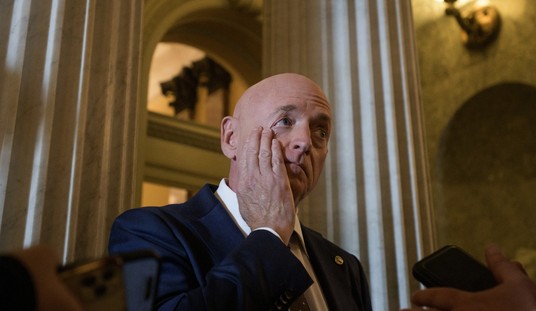For conservatives who felt the Roberts Court has gone leftward, your suspicions have been confirmed–and the New York Times’ Upshot blog has crunched the numbers. Yet, it’s not a huge swing to the left a la the Warren Court, though the Supreme Court has issued a liberal ruling in 54 percent of the rulings this term. Yet, as the Times noted, sometimes a major case, or a couple of them, determine the mood of the Court’s leanings, despite how previous decisions have gone in either political direction. It also depends on the issue. Regarding abortion, the Second Amendment, and race issues, the Court leans to the right, while the environment, health care, and gay rights have usually elicited a leftward bent in the Court’s decisions:

Via NYT: The chart above shows how the court has voted in every case by term — starting in October, usually ending the following June — since 1946. Decisions considered liberal are blue, and ones considered conservative are red, with darker shades representing more unanimity.
The court has issued liberal decisions in 54 percent of the cases in which it had announced decisions as of June 22, according to the Supreme Court Database, using a widely accepted standard developed by political scientists. If that trend holds, the final percentage could rival the highest since the era of the notably liberal court of the 1950s and 1960s led by Chief Justice Earl Warren. The closest contenders are the previous term and the one that started in 2004 and ended with the announcement of Justice Sandra Day O’Connor’s retirement…
The most conservative term since before the Warren court era was the fourth one of the court led by Chief Justice Roberts, in 2008, and the first term of the Roberts court was close behind. Conservatives certainly have many reasons to be happy with the Supreme Court’s recent work. On campaign finance, gun rights, race and abortion, the justices have delivered strongly conservative rulings. At the same time, the court does seem to have drifted slightly to the left since 2008, in part because of rulings on gay rights, health care and the environment.
…
“Liberals are having a pretty good run so far this term," said Rick Hasen, a law professor at the University of California, Irvine. "But what happens at the Court in the next week or so will determine how observers view the term."
…
The crucial vote on the current Supreme Court usually belongs to Justice Anthony M. Kennedy. In 5-to-4 cases in the Roberts court era, he is usually in the majority, more often than not leaning right. But in the current term, he has gone left roughly as often as right in 5-4 cases, including in two decisions announced on Monday.
The chart above shows the rise in Justice Kennedy’s power after Justice O’Connor left the court in the middle of the 2005 term. Before then, 5-4 decisions that leaned liberal frequently happened without him in the majority. Such cases have been less common in the last decade.
But the current term has been a bit different in this way, as well. One of the other four Republican-appointed justices has joined the liberal side in about half of the 5-4 left-leaning decisions. Chief Justice Roberts has been the second most frequent justice to do so, with Justice Clarence Thomas also doing so on occasion.
Recommended
In 2014, Justices Ginsburg and Scalia spoke with Marvin Kalb about the Court, and towards the end of their 75-minute panel; both justices agreed that they agree* on a lot. In fact, in May of 2013, the justices delivered unanimous decisions in 60 percent of the cases up to that point.

Heck, even Kennedy agrees with Ginsburg 76% of the time.

Scalia joked that Ginsburg was just really bad on the “knee-jerk stuff.” Moreover, most of what they do is real law concerning interpreting the tax code and other dense congressional statutes. They admit that it’s quite boring. Ginsburg added that the press only focuses on the 20-25% of the cases where the Court falls along those partisan lines.
Nevertheless, there's still the fear from conservatives that justices appointed by Republicans will eventually being arguing for the other side. Former Supreme Justice David Souter–a Bush 41 appointee–is a classic example, given that Bush's Chief of Staff John Sununu reportedly said he would be a “home run” for conservatism; Souter ended up making up the core of the liberal wing of the Court. Justice Anthony Kennedy, a Reagan appointee, is more looked upon as King of the Center–a role he filled after Justice Sandra Day O’Connor retired.
At the same time, deciding where the Court will fall has become a fool’s errand. In 2012, most thought Obamacare would be finished after hearing oral arguments that some thought pilloried Solicitor General Donald Verrilli’s positions. In the end, Roberts proved to be the swing vote, adding that the Obamacare penalty acts as a tax, which is within the purview of Congress’ taxation powers and, therefore, constitutional.
*Discussion about agreement beings around 54 minutes into the discussion.

























Join the conversation as a VIP Member